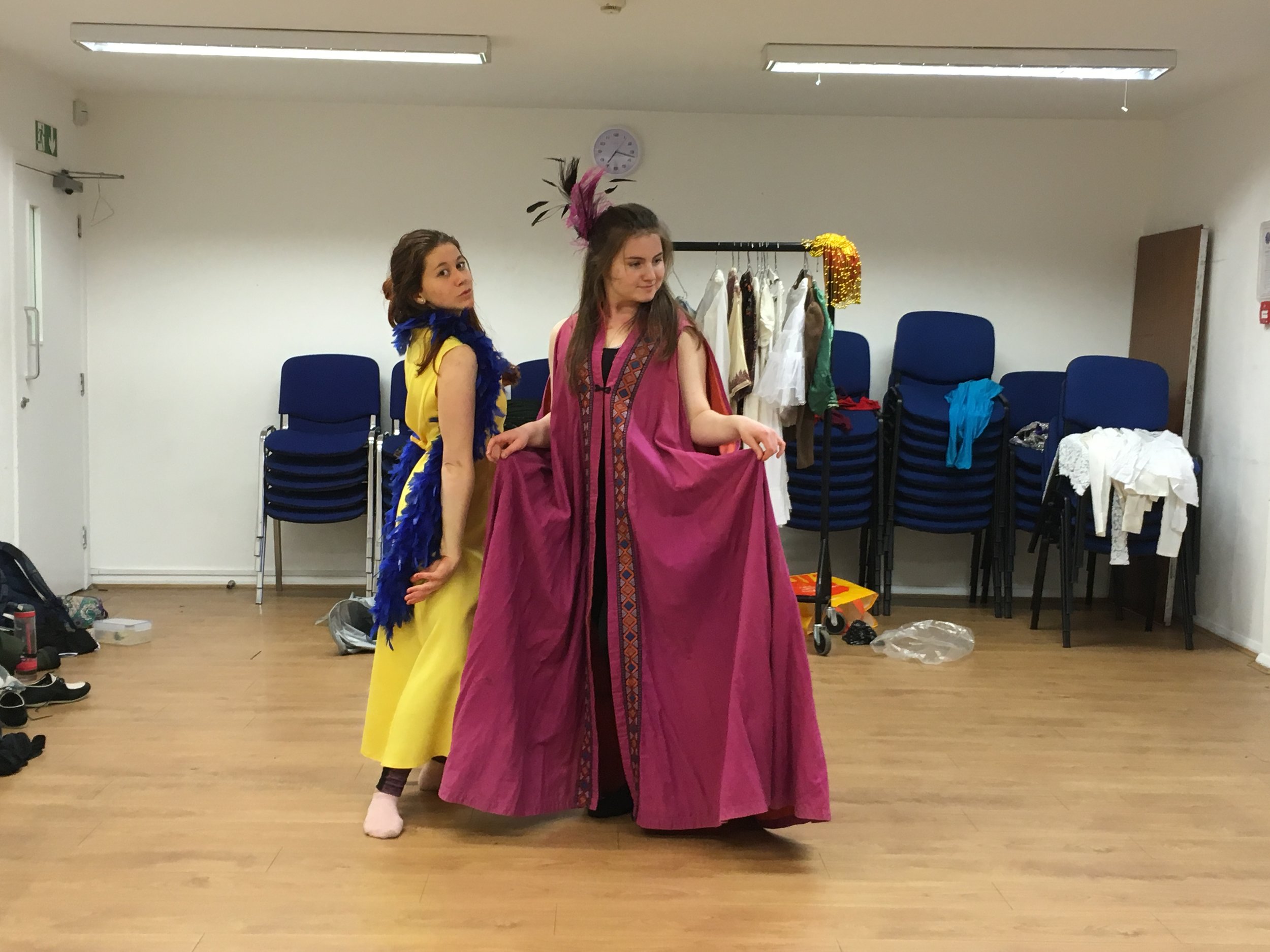The Discovery of a Process
Costume Experimentation day with Sara and Carly
After the first performances in the Swiss Cottage Library, a complicated journey began in which I didn’t have time to work on the project, but also was working on the project, because to not do it didn’t feel like an option. The literary ghost of Cathy had infected me, which I’d come to realize is something that Cathy does to many people, and I couldn’t let her go. I had to figure out where she would take me. I’ll talk about this in more detail in a separate blog entry, but in coming to develop a working method specific to my process, I began reading and researching extensively about Wuthering Heights, Emily Bronte, Kate Bush, and tried to determine what the right structure for the show would be. This was occurring simultaneously to working on visual and sensorial elements that would be incorporated into the production: music, costume, materials etc.
It was in watching the 2014 BBC documentary “The Kate Bush Story”, that the breakthrough in structure emerged. This came from Kate continually being described in ways that I’d come to understand as a common style used to describe Emily Bronte. Notes I took down from this watching include “everything about Kate Bush is not straightforward but ambiguous…beautiful but also chilling…Her music is so intensely private, and you come off listening to her album blushing because that’s really unique; she’s revealed a little bit of her soul to you”. I had at this point already very much felt a connection existing between Emily Bronte and Kate Bush, but these types of specifics seemed too much of a coincidence. It was from this research into Kate Bush that the show structure initially emerged, modeled off of the career of Kate Bush. A three part structure that begins with the ghost of Cathy coming back to haunt (as Kate does in her breakout single), evolving into what happens when a creative young woman is not a one-hit wonder (Kate’s next few albums) and then bringing in Emily, the strong voice of the creator, structured on Kate’s embrace of her own creative energy and voice through The Dreaming, which she also self-produced.
Preparing for a Rehersal Audience
Now that it was clear the story existed as a complete unit, what remained was to connect and fill it in. This was done in many different ways, and one was to run one-off workshops on a particular theme or question, for example what kind of movement responds to the music that Sara’s written for the show…what do you get if you isolate and repeat striking moves and facial expressions out of a range of Kate Bush music videos…how would we do storytelling through costume? Perhaps most importantly, this entire process of infused with the quest to discovery, why Cathy? First I interrogated what my personal relationship to the character Cathy was, which then led to hearing the perspective of many others on the same relationshiop. There was a pilgrimage trip to Haworth and The Bronte Parsonage Museum; there was a massive post-it note wall. In performing elements that we were experimenting with in front of volunteer audiences we began to truly build the show.


